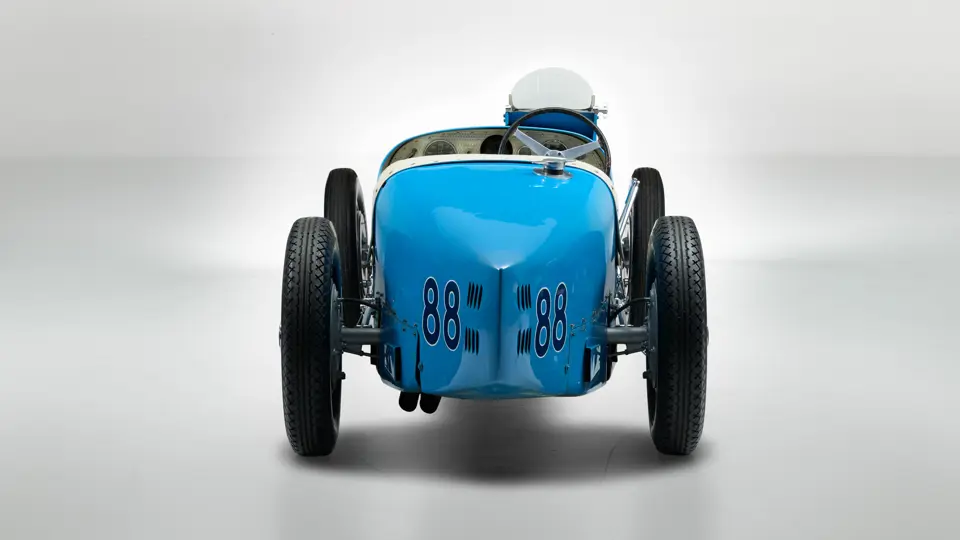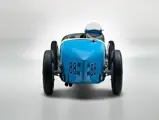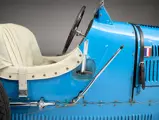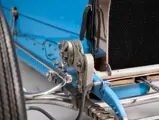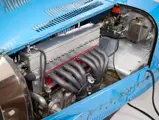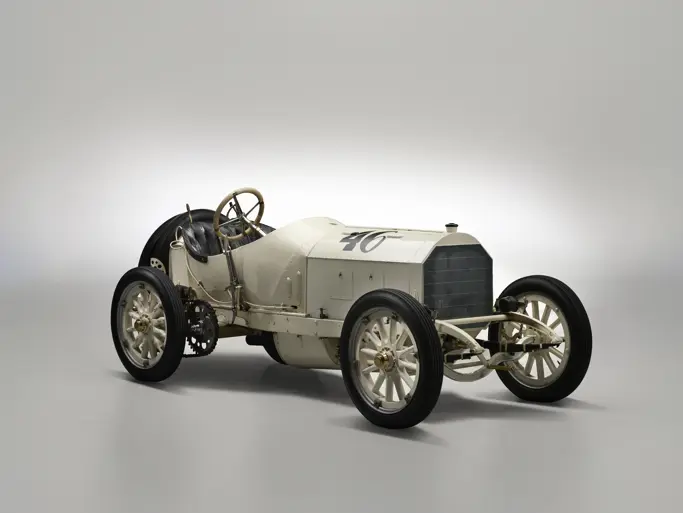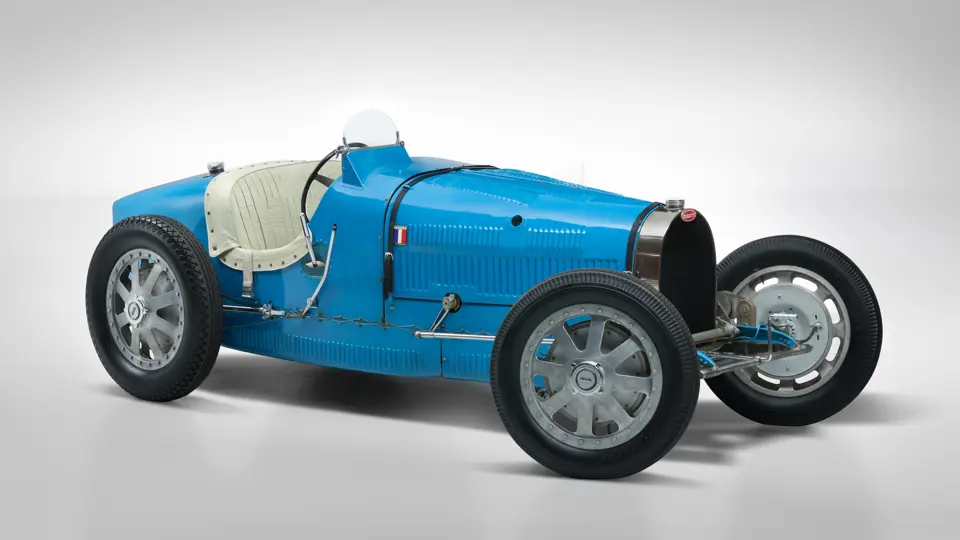
1930 Bugatti Type 35B Grand Prix
{{lr.item.text}}
Offered from the Collection of the Indianapolis Motor Speedway Museum
{{bidding.lot.reserveStatusFormatted}}
- A genuine supercharged Type 35B model, with known history since new
- Raced in Europe both before and after WWII at notable venues, including Monaco, Dieppe, Comminges, Bugatti Grand Prix at Le Mans, and Chimay, as well as hillclimb events
- Only six owners, including Georges Bouriano, Arthur Legat, and Colonel George “Fearless” Felton
- Part of the Indianapolis Motor Speedway Museum’s collection since 1960
- Retains its original chassis frame, engine, and rear axle
- A provenance-rich competition Bugatti, from 65 years of distinguished ownership
THE BUGATTI TYPE 35
With the Bugatti Type 35’s first appearance at the 1924 French Grand Prix held at Lyon, there was no doubt to anyone who saw the car run that this was an automobile that had it all: durability, mechanical functionality, and a wonderful sporting exterior design. The Type 35’s best finish for that race was a respectable 7th overall, but it was clear that the car had the potential for greater success following future tuning and refinement. Indeed, in its many variations, it would eventually become the most successful racing car, in number of total victories—a record which it still holds today and likely will never lose.
Bugatti’s final iteration of the Type 35 would be the Type 35TC, or as the model came to be called, the Type 35B. This new model, which bore the same 2.3-liter, eight-cylinder motor as the earlier Type 35T, was outfitted with a supercharger that was similar to the one in the Type 35C, albeit slightly larger and more powerful. In its day, the Type 35B boasted incredible performance figures, and these figures are still respectable today. It was capable of accelerating from 0 to 60 mph in just six seconds, and it had a top speed of 125 mph.
CHASSIS 4947 IN ACTION
The Type 35B in the Indianapolis Motor Speedway Museum’s collection, chassis number 4947, was completed in the autumn of 1929. While the American Bugatti Club Register postures that the car was retained and raced by the factory in the European Grand Prix, there were no significant races on the schedule between the car’s completion and its final sale in March 1930 to Romanian racing driver Georges Bouriano. Bouriano is best-remembered for his 2nd-place finish in a Bugatti Type 35C at Monaco in 1929, behind only the famous Bugatti works driver William Charles Frederick Grover-Williams, also known as “W Williams,” in a Type 35B. Bouriano registered this car, chassis number 4947, on temporary plates “1656-WW5” and drove it away from Molsheim.
According to historian Pierre-Yves Laugier, Bouriano recounted that his successes in his previous Type 35 had resulted in Ettore Bugatti selling “me a new car at a very special price. I entered the new 35B in the 1930 Monaco race. I slowly gained on Chiron and Bouriat; we all three arrived at a certain corner. It is characteristic of me that I will not accept to be passed and I came out first, but had hit a sandbag, sand got into the carburetor, and then into the compressor which seized, and I had to abandon [the effort].”
His subsequent entries in the car included the Bordino Grand Prix, where the car survived a rather spectacular accident only to be repaired by the factory. It was also run in grand prix races at Dieppe and Comminges, both in France and important circuits in the early days of motor racing; Bouriano retired in both cases, with unspecified mechanical issues and a broken piston ring, respectively.
The last known racing event for 1930 was the Bugatti Grand Prix at Le Mans. Held from 1928 through 1930 at the venue that is famous for its 24-hour endurance race, the Bugatti Grand Prix was an interesting event open to all Bugatti owners; although both amateur and professional drivers were eligible to compete, no factory-backed cars were permitted. Unfortunately, Bouriano retired from the 1930 event with a bent steering arm after hitting an animal on the track.
No records exist of Bouriano racing the car in 1931, but in 1932 he returned to Chimay, Belgium for the Grand Prix des Frontières, held on 15 May on an approximately 6.5-mile street circuit. There, he led the race in the first lap and set a lap record for the circuit at 125 km/h, only to DNF following a carburetor fire.
In 1934, Bouriano sold the car to a prolific competitor and three-time winner at Chimay, Belgian racing driver Arthur Legat, who upgraded from his prior Type 37A. Legat dubbed his new Bugatti La Boule II and also competed with the car, and with much greater success than its original private owner. Legat continued to compete at Chimay until 1939, driving chassis 4947 with the exception of 1936, when the event organizer asked him to use his Type 37A instead. Although outright victory eluded him, he placed 2nd in 1937, 7th in 1938, and 2nd again in the 1939 running of the Grand Prix des Frontières.
Yet circuit racing was not the Type 35’s only strength, and Legat also put his La Boule II through its paces at hillclimb events. Not long after acquiring the car in 1934, he took 2nd at the hillclimb held at Opbrakel in Belgium, as well as 1st in both the Bomerée and Wavre hillclimbs, also in Belgium.
During World War II the car was sold to Pierre Vingerhoedts of Antwerp, who modified it with an “aerodynamic body” that would be used until 1948. As shown in a photograph taken in 1946, however, this “new” body was in fact a superficial update of the original Molsheim sheet metal, consisting largely of a streamlined radiator surround and a tailfin that was attached to the car’s original tail section.
Despite Vingerhoedts’ ownership, he continued to allow Legat to drive the car in events for at least two years. Its first post-war outing was on familiar turf: The Grand Prix des Frontières in Chimay, Belgium, where Legat, and the car, retired during the 10th lap with engine trouble. The car once again retired from the 1947 edition of the race due to drive shaft issues, again with Legat driving. That June, chassis 4947 again proved its mettle as a hillclimb contender: Vingerhoedts piloted it to victory at the 1 km hillclimb at Huy, Belgium, at what would be that event’s final running. It would prove to be chassis 4947’s final European race outing, as well.
FEARLESS FELTON’S BUGATTI
Following a crash in 1948, which reportedly occurred during preparations for that year’s grand prix in Chimay, Vingerhoedts fitted the Bugatti with a modern, Maserati-style single-seat racing body. The car was apparently never raced in this configuration, however, and by 1955 Vingerhoedts had resold the car to the prolific Dutch Bugatti dealer Jean de Dobbeleer. A photo on file shows the car in de Dobbeleer’s garage, wearing this updated bodywork.
De Dobbeleer handled an enormous number of cars in the post-war era, dealing many of them to enthusiasts elsewhere in Europe and the United States. In this instance, the car was sold to Colonel George S. Felton. “Fearless Felton” was one of the best-known figures in the early automobile hobby on the East Coast, famously serving as the first vice-president of the Vintage Sports Car Club of America. He had the Bugatti restored by another notable participant in the dawn of the hobby, Edgar Roy of Roxbury, Massachusetts.
It is presently unknown whether Felton received chassis 4947 from de Dobbeleer with the updated monoposto bodywork still fitted, or whether it had been returned to its original configuration prior to its export to the United States. Close inspection of the bodywork, including by RM Specialists, indicates that the hood, belly pans, and tail sections of the bodywork are original, Molsheim-made components, with only the cowl area showing evidence of later fabrication or significant repair.
Further, the Winter 1956 issue of Bugantics includes a photo of chassis 4947, with a caption indicating that the car was then “nearing the end of a rebuild” and showing the cowl, tail section, and belly pans already fitted to the chassis. The Spring 1957 issue shows Felton behind the wheel of his completed Bugatti—a relatively rapid restoration timeline that further supports the fitment of original body components with minimal fabrication work.
Alas, after racing the Bugatti only once, Colonel Felton passed away suddenly in November 1959. Edgar Roy sold the car on behalf of the estate to Anton "Tony" Hulman Jr. for the Indianapolis Motor Speedway Museum, which took receipt in 1960 and has now owned this special automobile for a remarkable 65 years.
Inspection of the car today shows that it retains much of the Roy restoration, with certain liberties often taken by even the best craftsmen in that early “enthusiast” era of collecting, including non-original instruments, an AC fuel pump, and a Zenith 38U carburetor, likely for durability in racing, just as the hydraulic brakes were fitted for safety, although the latter was done with minimal modification and utilizing the original backing plates and shoes.
Yet underneath is an excellent and correct Grand Prix Bugatti, one that retains its original chassis frame, engine, and rear axle, as confirmed by Laugier, and, in fact, numbers in nearly all the areas that a Bugattiste would seek to find then. The gearbox cover still bears the correct original number markings, although the gearbox itself is believed to be a factory replacement casting. The fuel tank is even the original, and the replacement front axle is an original Bugatti piece, albeit from a Type 51!
This is an unusually mechanically pure supercharged Grand Prix Bugatti, with, even more remarkably, continuously known history back to its original owner—indeed, it has had only six owners in its nearly century-long lifetime. With its record of European racing both before and after WWII, it contributed to the Type 35’s immortal motorsport legend, and it has been fittingly preserved on the grounds of one of the world’s great temples of speed, within the Indianapolis Motor Speedway Museum, for over six decades.
Its offering here marks an exquisite opportunity to acquire a car of character and personality, still very much the automobile that Bouriano experienced at speed on some of Europe’s greatest circuits.
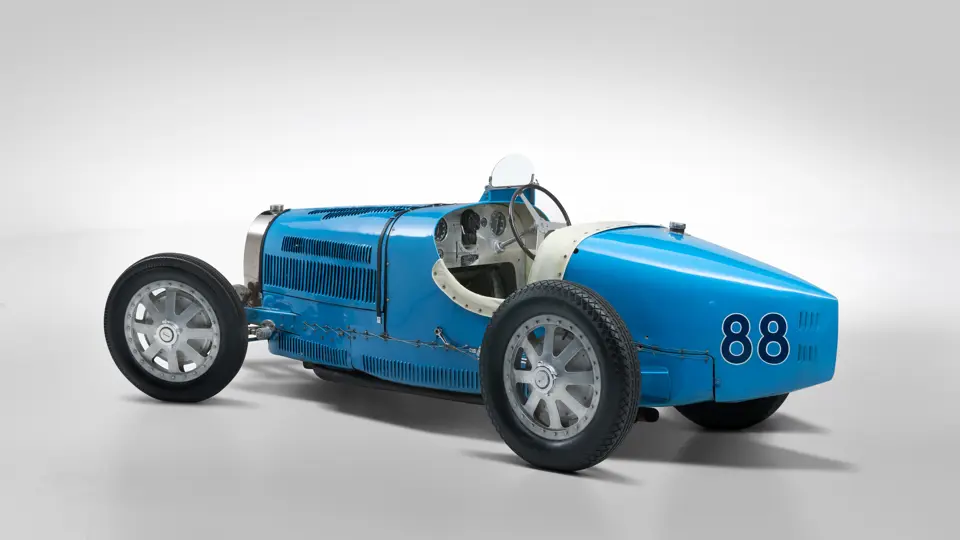






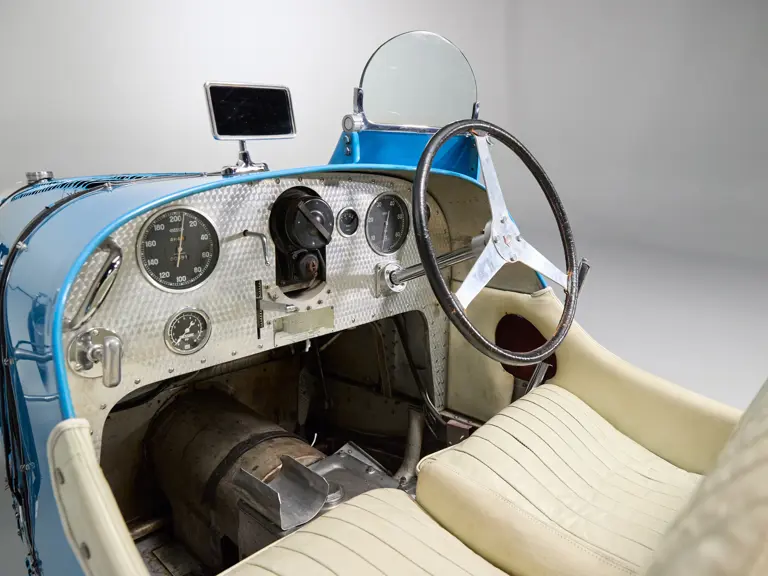






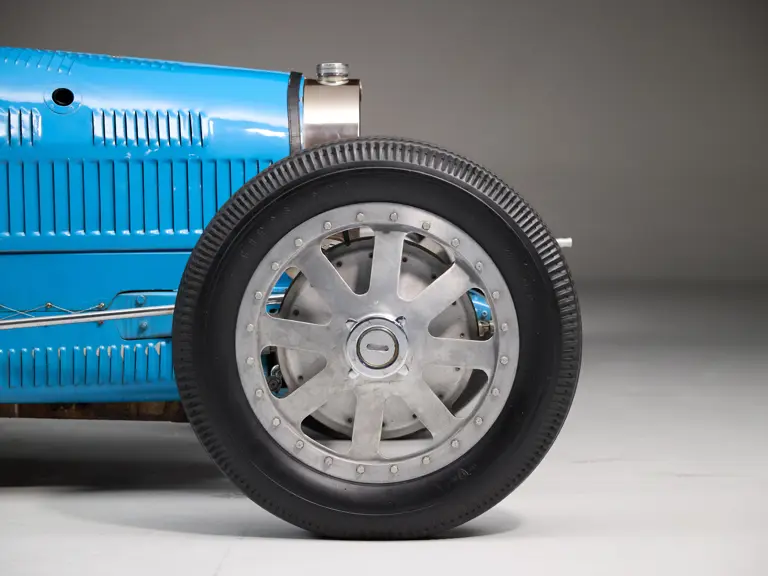
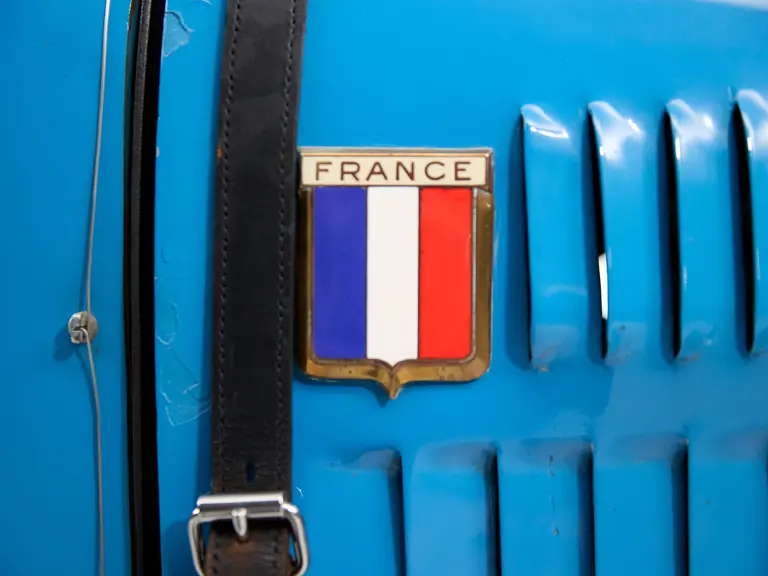














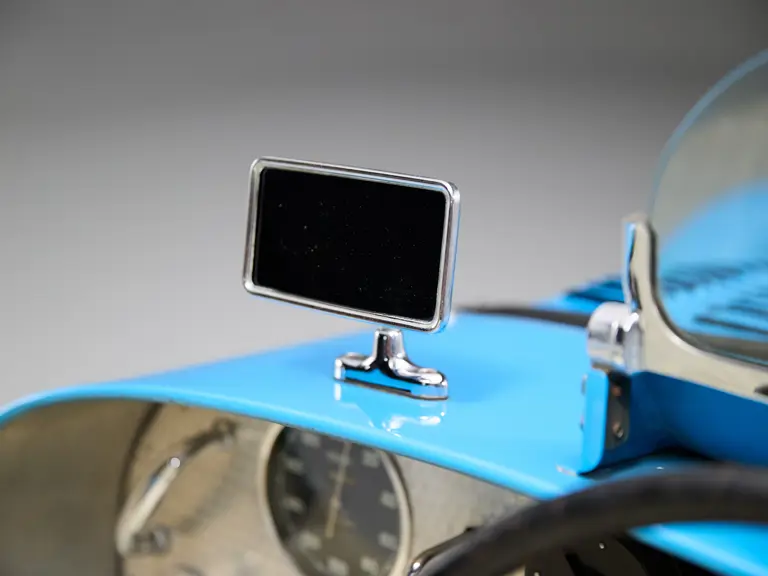



 | Coral Gables, Florida
| Coral Gables, Florida


